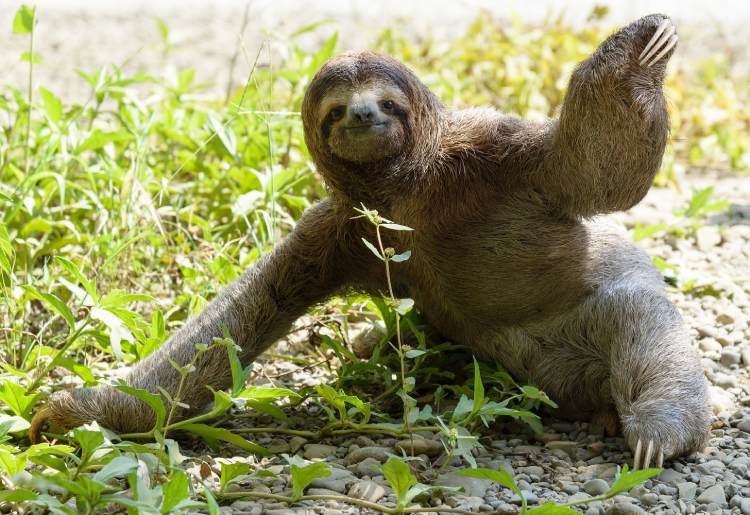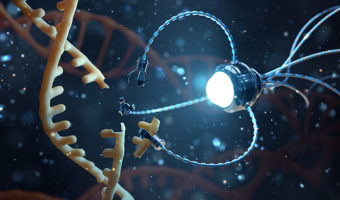Why Sloths Are So Slow? Uncover Some Fascinating Facts!
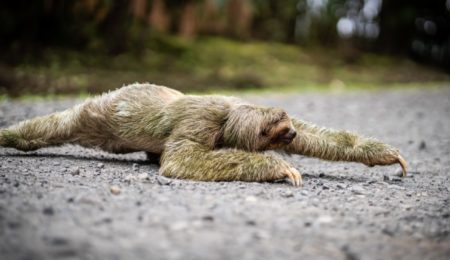
Some animals are known for their enormous size, some for their strength, and some even for their adorable appearance. But sloth is an animal that is popular for being extremely slow! Normally residing in the trees of central and northern South America, sloths are commonly seen hanging lazily upside down. However, have you ever wondered if there could be any fascinating reasons behind their unbearably slow pace? And why are they mostly seen hanging on trees? The answer to these questions and other interesting facts about the sloth will surely surprise you.
Why Do Sloths Move So Slowly?
Sloths move slowly because of their incredibly slow metabolism, which works at only 40-45% of the rate typical for other mammals with their body weight. Because of this, they have no choice but to eat a low-calorie diet. Their diet mainly consists of leaves, and it takes 30 days to digest one leaf! You can imagine how slow their digestive system works.
Their four-chambered stomach is always full. So, sloths can only consume new leaves after the previous ones have passed through their stomach into their small intestine. Therefore, they have to move slowly to ensure they don’t burn all the calories.
Additionally, sloths have a rare genetic condition known as “rod monochromacy,” which unfortunately makes them colorblind. This lack of vision contributes to their slow movement, as they prefer to be extremely cautious of their surroundings while moving around.
Here Are Some More Lesser Known Unique Facts About Sloths
1 Sloths Defecate Only Once a Week
One of the interesting facts about the sloth is that it only gets down from its tree-dwelling environment about once a week to poop. This again goes back to the fact that their digestion and bowel system, on the whole, are not in great condition. When they come down from the trees to poop, something remarkable happens. They lose about one-third of their body weight all at once! In fact, you can witness their stomach shrink after they are done with defecation.
Once a sloth is on the ground to poop, it performs a “poo dance,” creating a small hole in the soil, creating a space for the matter. After the excretion is all done, the sloth does a quick wiggle and then climbs back up the tree. Since sloths are prone to constipation, each bowel movement is an experience similar to that of childbirth. This risky activity is life-threatening because when they are on the ground, sloths are vulnerable to predators.
2 Sloths Are Amazing Swimmers with the Ability to Hold Their Breath for up to 40 Minutes
Although sloths are super slow on the ground, they are almost like ninjas in water. Their long claws, which contribute to their slow movement on land, are no longer a hindrance because they don’t have to walk when they are underwater. They have powerful, long arms that enable them to move three times faster in the water than they can on land!
One of the astounding facts about sloths is that they can hold their breath for up to 40 minutes underwater. They can halt their metabolism and drop their heart rate to one-third of their typical pace during this time.
3 The Sloth’s Algae-Covered Fur Provides it with Excellent Camouflage, Protecting it From Predators
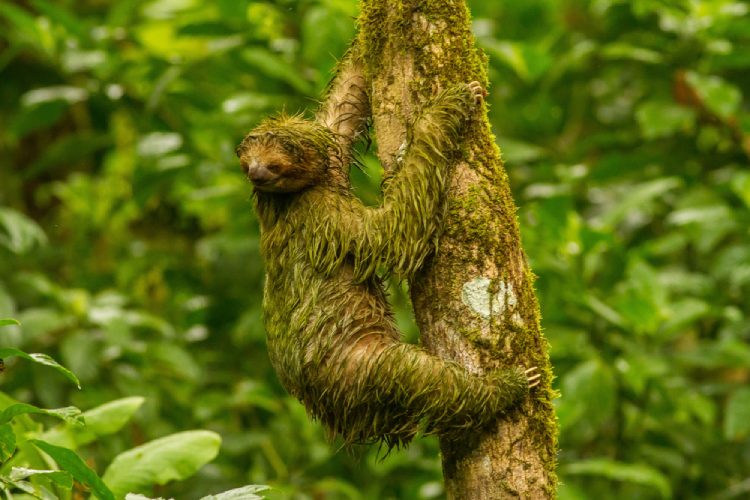
A sloth’s fur contains fungi, algae, insects, mites, and ticks. In fact, researchers once discovered 980 bugs on a single sloth! Many of these species can only be found in sloth fur, such as sloth moths. A study even revealed that a three-toed sloth can be home to over 120 sloth moths.
There is a symbiotic relationship between sloths and the algae that grows on their fur. The sloth provides water (because the sloth’s fur is a really great absorbent) and shelter to the algae.
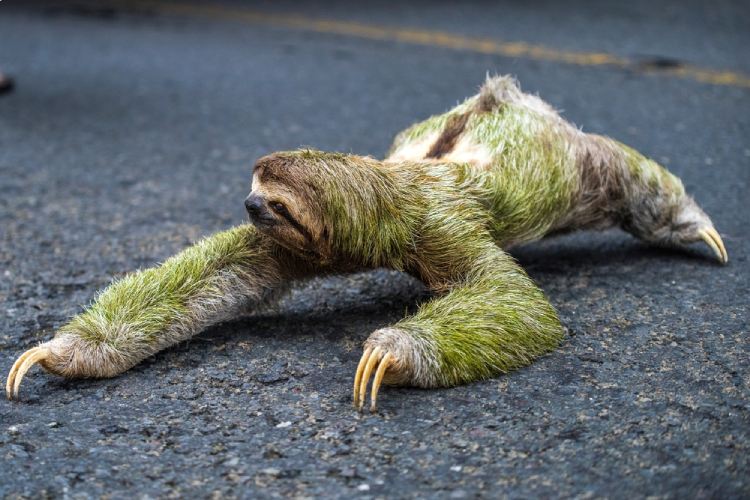
Another research proved that the algae provide a significant food source for sloths. The algae found in sloth fur are easy for them to digest and contain carbohydrates, protein, and three to five times more fat than the tree leaves they usually eat. So, cultivating algae in their fur helps sloths get important nutrients, making it a crucial aspect of their diet.
Additionally, the algae and fungi growing on sloth’s fur make them look green, helping these slow mammals blend into the greenery. This is a lifesaver for sloths because predators that rely on their vision, like raptors, won’t even notice sloths.
4 These Tree-Dwelling Mammals Are Three Times Stronger than Humans
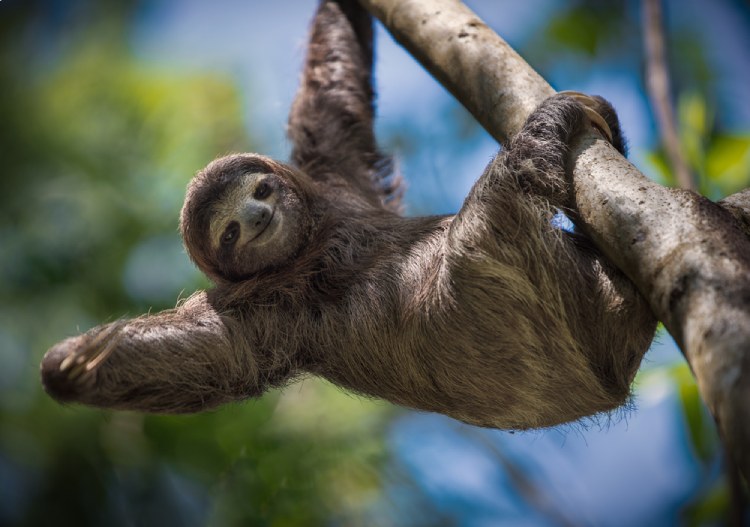
Sloths rarely leave their tree homes, moving slowly between tree branches. They descend to a lower canopy on the tree to give birth to their babies, all while hanging upside down. Sloths are incredibly powerful for their size and muscle mass. Even newborn babies are super strong! They have the ability to lift their entire body weight with just one arm by doing a pull-up on tree branches!
Sloths naturally have about 30% less muscle than other mammals their size. Despite this fact, they are over three times stronger than an average human. Sloths have specialized muscle arrangements that give them tremendous strength. They hang tight on trees even if something as strong as a jaguar tries to pull them down.
5 Three-Toed Sloths Have Super-Flexible Necks that Can Rotate 270 Degrees Because of Extra Vertebrae
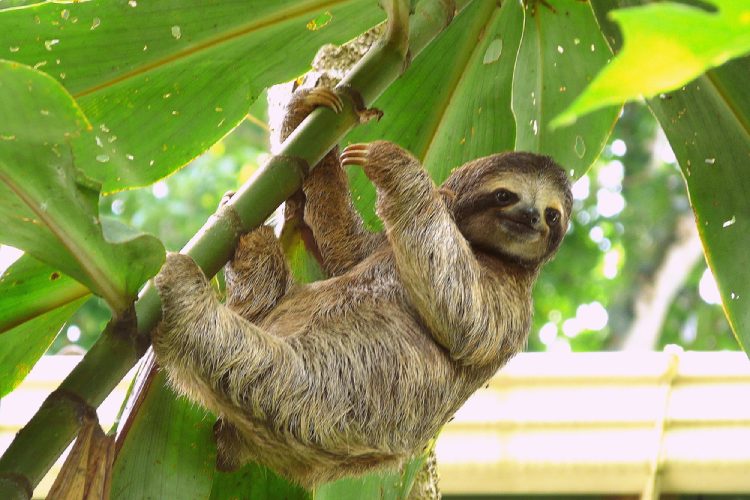
The three-toed species can almost get a full-circle view of their environment! This capability acts as a support to their heads when they are hanging. It also allows them to be more wary of their surroundings by enabling them to easily gaze around to stay away from predators.
But how are they able to rotate their neck to three-quarters of a complete rotation? It is because of their neck structure. Sloths can have up to three additional vertebrae, i.e., bones in their spines. The vertebrae are located at the base of the neck, near the rib cage. In most animals, the vertebrae in the neck form after the vertebrae are connected to the rib cage. However, for the sloth, the process is just the opposite. The extra neck vertebrae develop before the rest of the neck. This unique neck structure allows sloths’ heads to move freely.
Which among these interesting facts about the sloth blew your mind the most?














